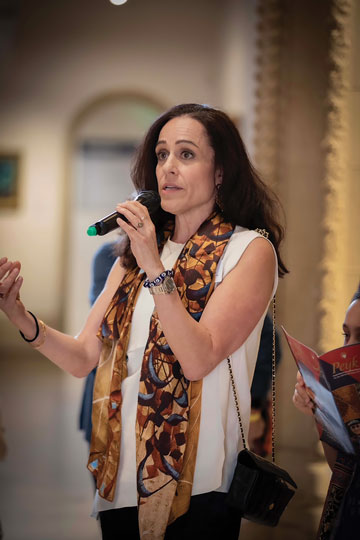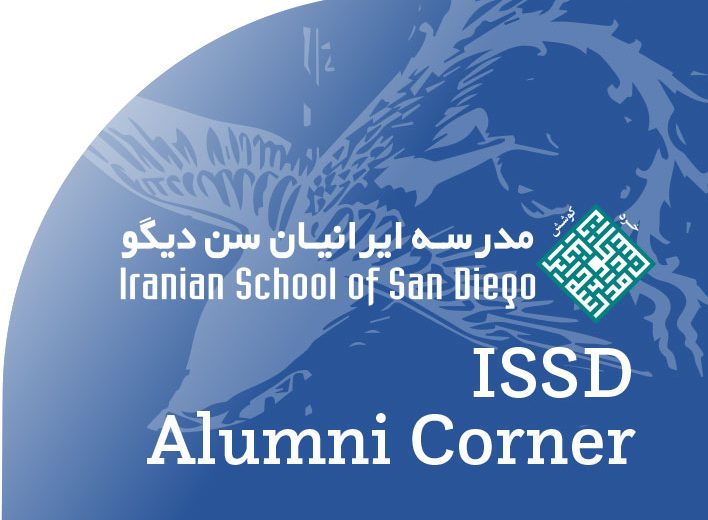San Diego Museum of Art presents:
Wonders of Creation: Art, Science, and Innovation in the Islamic World
An Insider’s Guide: The San Diego Museum of Art’s newest exhibition opened on September 7, 2024. We’ve asked Dr. Ladan Akbarnia, curator of this extraordinary new exhibition, to walk us through a selection of the works on view. Read more about specific works below, and, next time you visit, use this interview as a guide for a highlights tour of the exhibition. (From SDMA Newsletter)
Interview with Dr. Ladan Akbarnia
Curator of South Asian and Islamic Art
 Will you walk us through the exhibition and share some information on some of the works throughout?
Will you walk us through the exhibition and share some information on some of the works throughout?
When you first walk into the Rotunda, you’ll see a fleet of boats that are made by the British-Syrian artist, Issam Kourbaj. I love these boats because they represent one part of what Qazwini asks us to do, which is to find wonder not only in the things around us that we would automatically perceive as extraordinary, but also the simple things that become extraordinary when we pause to observe and think about them. These boats are made out of used bicycle guards, meant for discarding. The artist bends and forms them into boats, filling them with burnt matchsticks to honor the Syrian refugees fleeing a civil war that has been ongoing since 2011 in their homeland; he continues making a boat each month until the crisis ends.
As you enter the exhibition, you’ll see a begging bowl that is made out of half a coco-de-mer nutshell; again, a very simple material that is then carved and made into a work of art by the craftsperson. The bowl is an attribute of the Sufi, one who can be loosely described as a Muslim mystic, and a representation of a Sufi’s journey as they carry it on their path to becoming one with God. Also appearing in the introductory section of the exhibition are the beautiful opening pages of a 1421 copy of Qazwini’s text, borrowed from The Metropolitan Museum of Art. I found these pages to be so incredibly beautiful, richly illuminated in gold, with images that serve as teasers to the entire range of things you’ll come across throughout the text, and a poetic verse by a writer who died a few decades before Qazwini alluding to the cosmography’s structure and contents. It touches upon the many lives of this text, from generation to generation and place to place. I want people to see that and to feel that they are about to enter Qazwini’s book in the present time. I hope visitors will be encouraged to follow their curiosity by entering the exhibition through these opening pages.
From the wonders and rarities section, the striking bifolio from the St. Andrews Library’s Book of the Wonders of the Age boggles the mind with an array of whimsical creatures. This manuscript, which is a compilation composed in late eighteenth-nineteenth century India—combining Egyptian theologian al-Damiri’s Hayat al-Hayawan (Lives of Animals, ca. 1371) and excerpts from Qazwini’s cosmography—is a primary vehicle for learning about Qazwini’s wonders of the seas.
Then we have the two major commissions I described in the last Member Monday, Hayv Kahraman’s Ghuraba and Ala Ebtekar’s 1000 Years of Light. As contemporary artists, living in our time, responding directly to Qazwini’s text, and reacting to it through their artworks, they help us develop a relationship to some aspect of the book. I like Hayv’s piece because it speaks to that part of any of us that feels foreign or like a stranger or outcast in another context or land, but must still claim their voice in it. Some may relate to the artwork’s tactility, in the palpable nature of the marbled substrate with uneven edges, created by the artist herself. Similarly, Ala’s commission allows visitors to engage with certain aspects of the book, specifically celestial bodies and astronomical objects, by bringing in pages from Qazwini’s text amongst other historical texts discussing the sun, written over a thousand years in the Islamic world.
In the earth section, Pantea Karimi’s Folding Gardens will definitely capture people as they walk into the terrestrial realm; the banners dramatically draped and lit in the center of the space with sounds of water fountains transport you to the artist’s memories of walking with her grandmother through the gardens of Shiraz in Iran. Many objects in this section show the incredible feats of skill and intellect through the transformative processes of simple materials and minerals into something wondrous.
Finally, I think everyone is going to want to immerse themselves in Timo Nasseri’s Florenz-Bagdad, which is an installation room of laser-cut, mirrored acrylic pieces attached to the wall in geometric patterns that explore the dimensions of muqarnas—the distinctively Islamic architectural-vaulting technique used to embellish domes, vaults, and transitional zones in buildings.
What do you hope guests will take away from viewing this exhibition?
I hope that guests will become familiar with Qazwini’s text and understand what a cosmography is in the sense of being an approach to understanding the world and an interesting way with which to view other types of visual cultures. I hope that, through the lens of wonder as defined by Qazwini and his cosmography, our guests are able to see the richness of materials, ideas, languages, artistic techniques, and crafts practices that come from the Islamic world. Our section panels and didactics will guide the guests through the magnitude of information and will help them realize that the array of objects on display are just touching upon the vast knowledge that Qazwini had at the time he wrote the book.
This exhibition, much like the cosmography, is a way to organize information in order to better understand the world around us and engage with its diverse cultures; and if some don’t understand any of it, especially those who might be too young to grasp the deeper philosophical aspects of the exhibition, we hope that they could at least enjoy an array of material cultures that is visually interesting with a richness of colors and textures that may carry different meaning and relate to familiar stories.
Regardless of our guests’ beliefs or where they come from, if they take a moment to examine just a few of the objects in this exhibition, they will feel that sense of wonder and, when they leave the exhibition, they might use that approach to see the beauty in things around them in a world that seems quite chaotic right now.


















